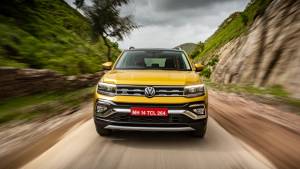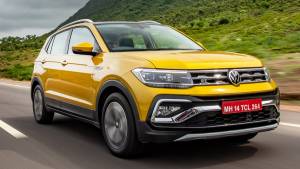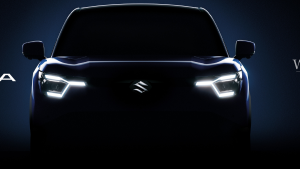2021 VW Taigun 1.0 road test review
Volkswagen's newest, the Taigun, joins the likes of its stablemate, the Skoda Kushaq, and the best-sellers, the Hyundai Creta and Kia Seltos in the crowded mid-size SUV segmentâ" which means it's got its work cut out for it from the get-go. Cut from the same cloth as the Kushaq, and based on the new MQB-A0 IN platform, the Taigun does do things a little differently when it comes to its variant mix. And while we've previously driven the VW Taigun 1.5 in both manual and DSG guise and come away impressed, this is our first taste of the excellent 1.0-litre, 3-cyl TSI engine and 6-speed manual gearbox in the Taigun, which will most definitely make up the bulk of sales â" aside from offering more than a hint of performance for the enthusiast on a budget. If you want to read our impressions of its cousin, the Skoda Kushaq, head here. Since we've covered everything you would need to know of the VW Taigun as a package previously, we're going to concentrate on how the Taigun 1.0-litre MT drives, and how it performs in the rigours of everyday driving versus the next logical choice, the Taigun GT 1.5 MT.Â

VW Taigun 1.0 driving impressionsÂ
From our first taste of the Volkswagen Group's 1.0-litre EA211 TSI in the Skoda Rapid, we were hooked on the urgency of its mid-range, and its rev-happy nature. Happily, that character carries forward into its application in the SUVs as well, with power remaining the same at 115PS but torque bumped up to 178Nm. In the VW Taigun, it feels like the noise and vibrations are as well controlled as in the Rapid, something we couldn't say of the Kushaq 1.0, which has slightly more noticeable vibes creeping in through the pedals and wheel at idle. Both the Taigun and the Kushaq however do exhibit micro vibrations in the front seats, visually apparent when sat in the rear of the cabin.Â
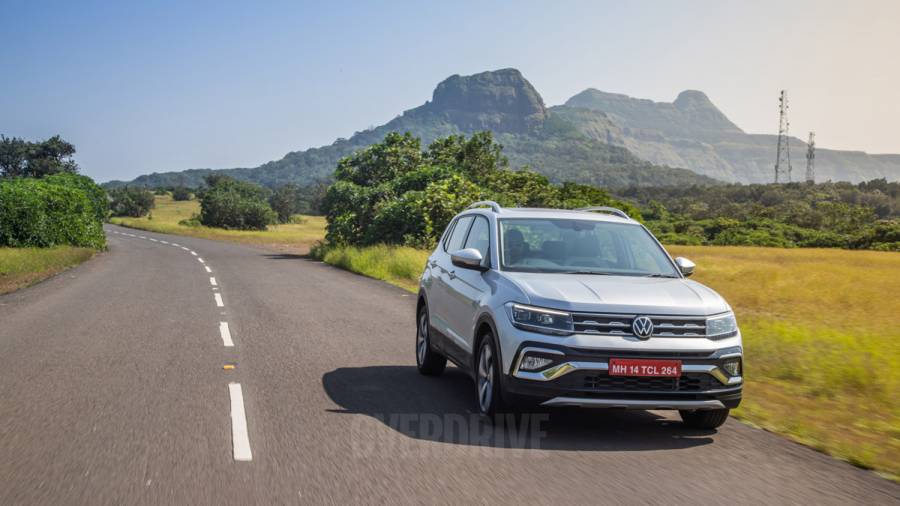
Drivability remains more or less the same, with some amount of turbo lag for you to drive around below 1,500rpm, with boost coming on around 1,800 revs, post which it's smooth sailing. Though, the ratios are otherwise well-spaced out for city driving, with only first feeling a little short for medium speed traffic, and you could find yourself shuffling between first and second searching for a happy middle ground, around 2,100rpm for stress-free progress. The instrumentation will also suggest shifting up a little too early, though the engine itself sounds very smooth and refined well past 2,500rpm. In-gear acceleration suggest slightly quicker performance than in its previous applications â" 30-50kmph in third was dispensed of in 4.0s, 50-70kmph in fourth in 4.5s, and 60-80kmph in fifth in 6.5s. For comparison, the VW Taigun GT 1.5 MT (150PS/250Nm) was consistently between half a second to two seconds quicker in the same tests, while feeling far more effortless thanks to its much stronger bottom end right from idle. In fact, while the 1.0 might penalise you for being lazy and not downshifting in certain traffic situations, the 1.5 encourages it and still pulls away cleanly!
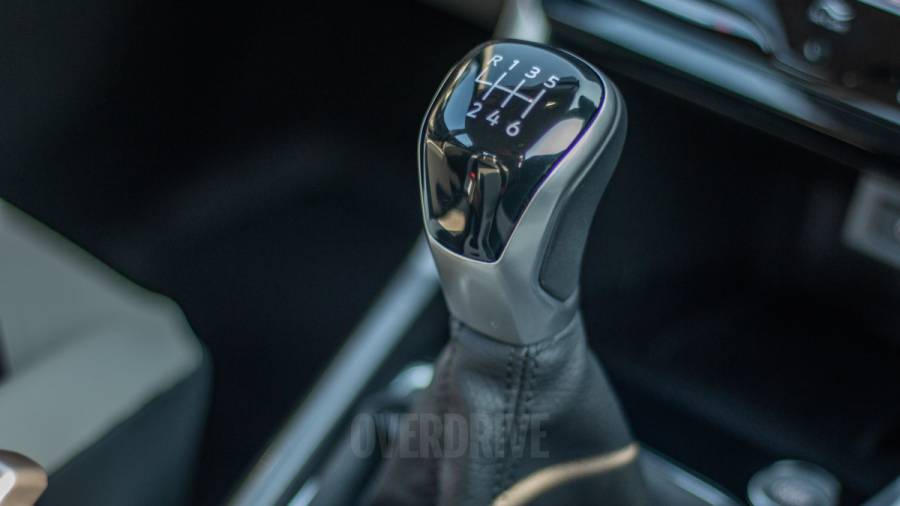
Shifts themselves feel very positive and mechanical, with a light, if a little springy step to the clutch pedal return, with only first feeling like it needs a calculated shift to slot in smoothly. With revs holding at about 4,000rpm and the standard ESC off, the VW Taigun 1.0 MT dashes off the line cleanly for a 0-100kmph sprint in 10.5s. The VW Taigun GT 1.5 MT, on the other hand, manages the same feat in a very, very impressive 8.9s.Â
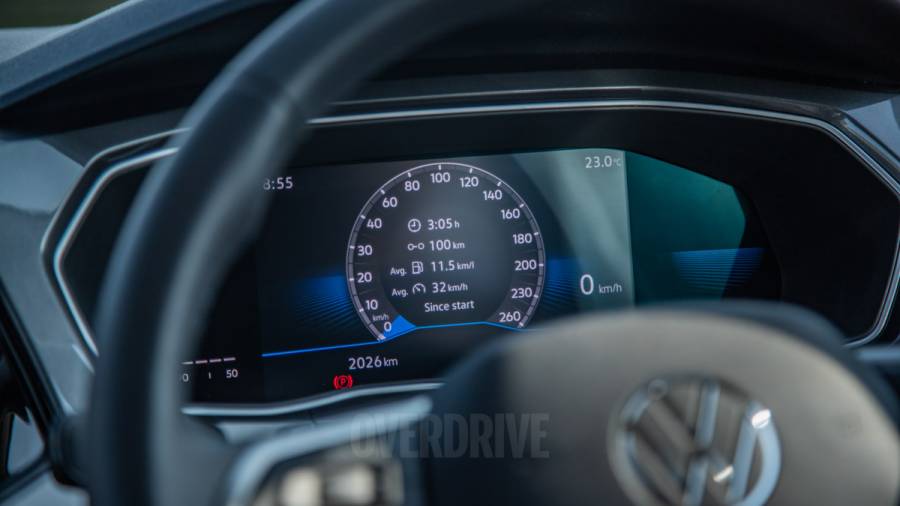
In the fuel efficiency stakes, the 1.0 trails the 1.5 again. City/highway efficiency for the VW Taigun 1.0 stands at 11.3/16kmpl, while the VW Taigun 1.5 posted 12.6/16.6kmpl over the same test route and similar conditions. The Taigun 1.5 of course, boasts of cylinder deactivation, that nearly seamlessly cuts the ignition on two cylinders to help improve fuel efficiency. That tech, and the fact that the 1.5 can be driven at lower revs with the same, or better, results are what helps it to its higher efficiency. For reference, the Taigun 1.0 is sitting at about 2,700rpm at 120kmph in sixth gear, while the Taigun 1.5 has its engine spinning at 2,400rpm.Â
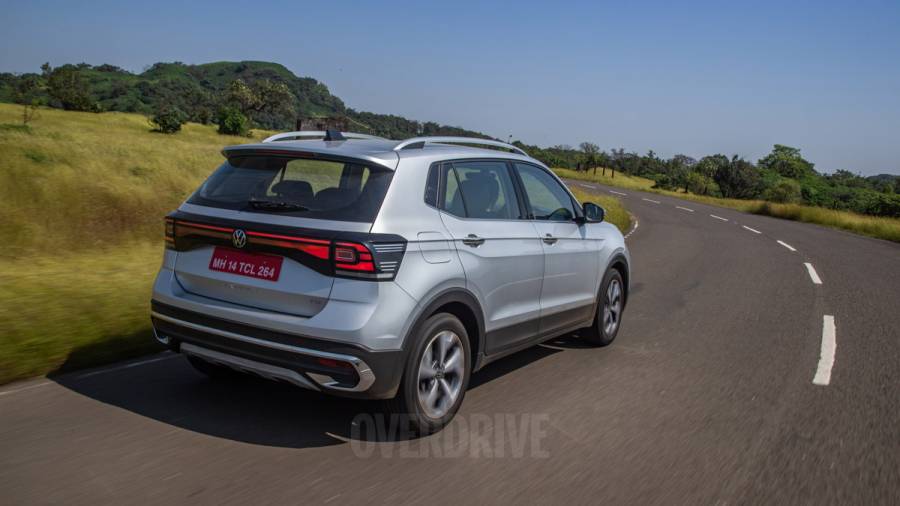
Thankfully, both the 1.0 and 1.5 manual are very easy to recommend as a driver's car, with the 1.5 earning extra favour thanks to its effortless low-end performance, while the 1.0 begs to be worked a little harder. For now, the Taigun 1.0 manual is available in a fully-loaded Topline variant, while the Taigun 1.5 manual is only available in a single GT variant which loses out on some of the modern niceties like the digital instrumentation, LED headlights, keyless entry, start/stop button, sunroof, six airbags and seat ventilation. Personally, I could live without most of the toppings, though the addition of seat ventilation, keyless entry and six airbags on a future variant would make it the no-brainer choice.
VW Taigun 1.0 ride and handlingÂ
We've covered how well the VW Taigun balances its ride comfort and handling prowess in our first drive review. And closer to home on roads we know well, it once again proves to be a comfortable long distance cruiser, as well as reasonably well damped over broken roads allowing for high degrees of confidence. Body roll is very well controlled, and the Taigun stays level even under hard cornering, without feeling like it's compromised in the ride comfort department.
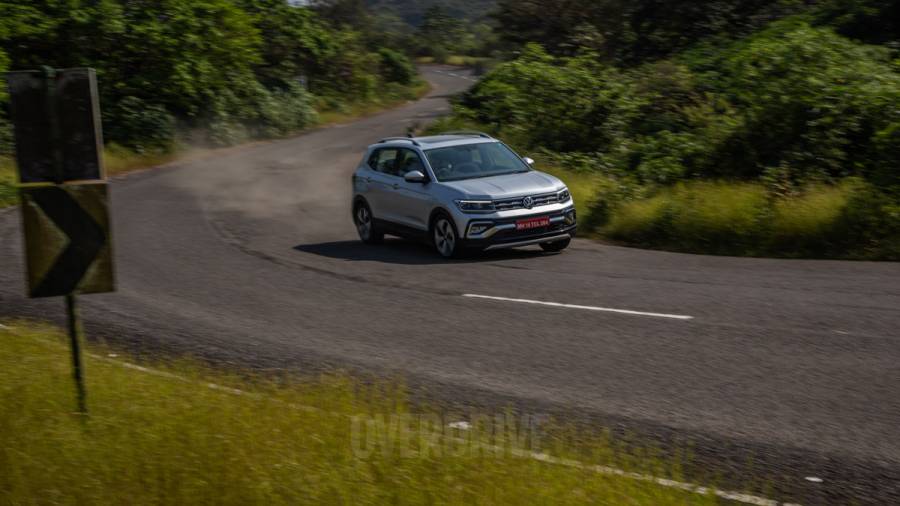
On the whole the chassis lets you feel just how tied down it is, with perhaps the damping backed off a bit to allow for better bump absorption, apparent in how rebound is tackled over speed breakers. The way the Taigun handles undulations and mid-corner bumps still is pretty impressive. And while the light steering can throw a few people off initially, it's very precise where it matters - in the twisties. The Taigun 1.0 Topline rides on 17-inch wheels, while the Taigun 1.5 GT is on 16-inch wheels, and the GT shows a slight edge in overall ride comfort without too much of a sacrifice in its handling chops.Â
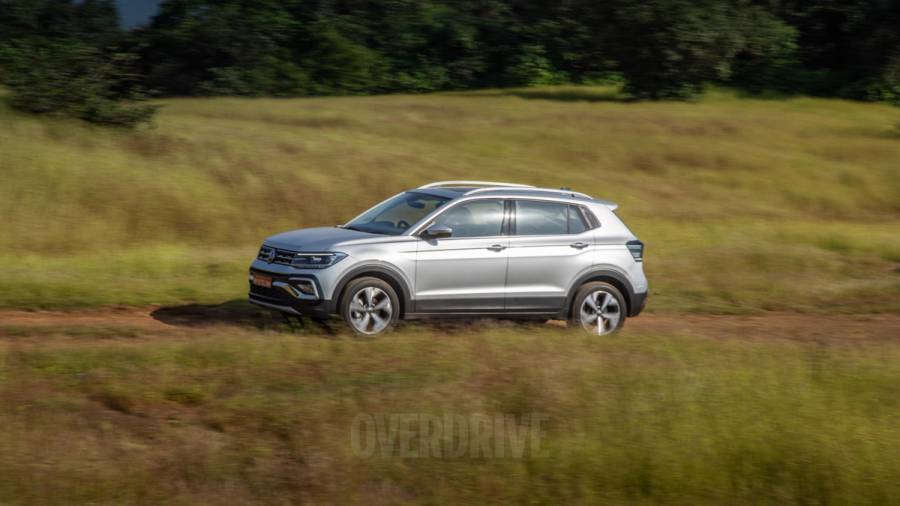
VW Taigun 1.0 styling and interiorsÂ
The Taigun certainly is a looker, especially in higher trims with the more detailed LED headlight elements, though the 17-inch wheels on this Topline variant make the most difference in giving it the right stance, with my favourite angle being the rear - those tail lights really come alive at night! Compared to the Kushaq which has no visual differentiation between the 1.0 and 1.5, the Taigun 1.5 can be told apart from the GT badges on the front grille, flanks and tailgate. It's nearly a dead-ringer for the Tiguan, though you notice the difference in size the moment your view shifts to its profile. It's SUV enough, it's just that it's pretty apparent it's not as large as its rivals. Though, as we saw when we pulled out our tape measure and really got into it, the difference in cabin dimensions is negligible (read a few millimetres) when compared to the likes of the Hyundai Creta.Â
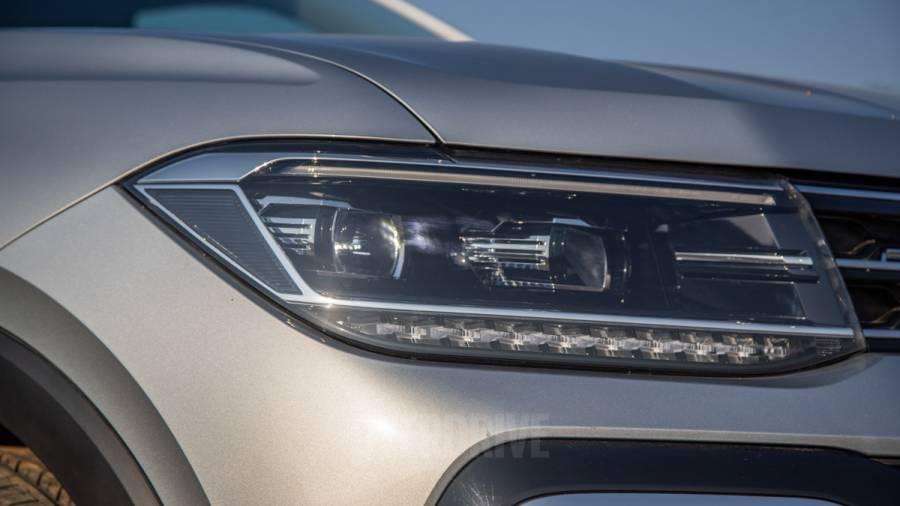

The Taigun's cabin feels typically Volkswagen, in how cleanly everything's laid out, and in its minimalist approach with the infotainment screen recessed into the dash. Body-coloured panels lift the ambience, and the 1.0 Topline's digital instrumentation and leatherette seats come with the advantage of ventilation (noisy as it is) when compared to the cloth seats on the 1.5 GT, and its basic but lovely analogue instrumentation. Also, the GT's ambient lighting is red compared to a subtler white on the 1.0. The seats themselves are comfortable, with firm cushioning that supports well over long distances. One thing we noticed is that the outer rearview mirror on the left can perhaps tilt further downwards to help gauge distance to kerbs while you're reversing.Â
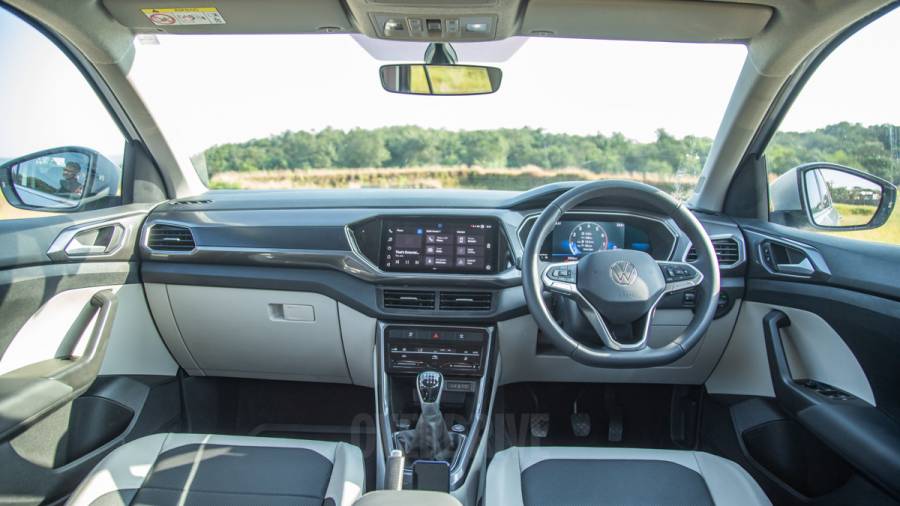
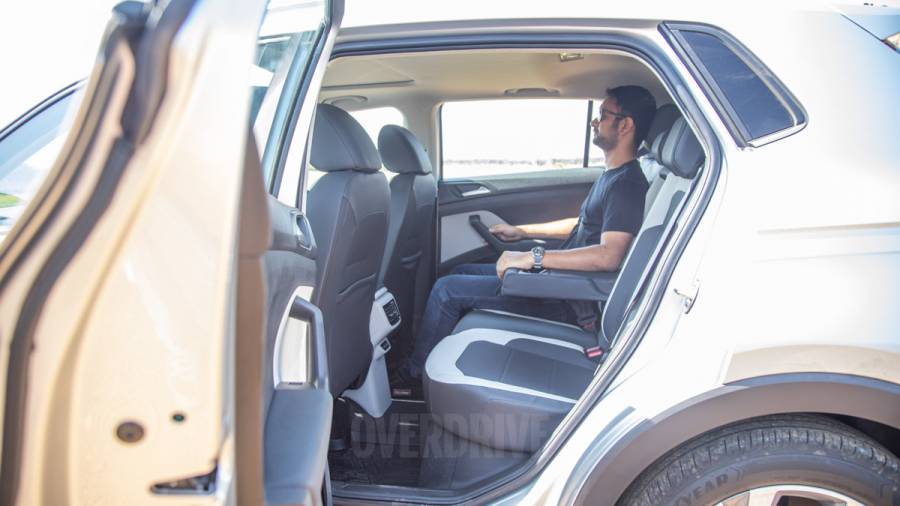
VerdictÂ
After spending a few days with the VW Taigun 1.0 as well as GT 1.5 with the 6-speed manual, it feels like most people would be more than happy with the complete package that the Taigun 1.0 represents, at Rs 17.2 lakh, on road Mumbai. Though, the 1.5 fundamentally drives better, and the price difference of just under Rs 60,000 over the 1.0 Topline might not seem like a lot, it's worth considering what price you put on the modern flourishes that have been cut to make that particular price point.
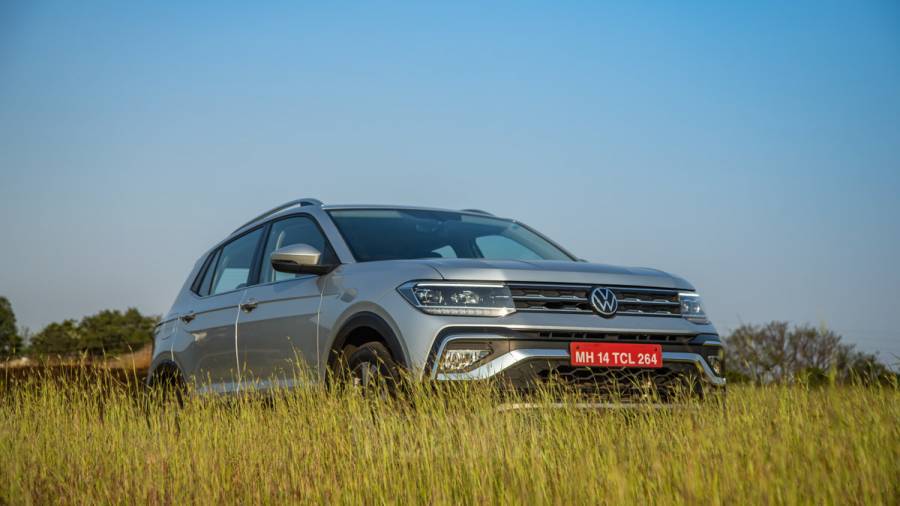
The flip side is, only the Kia Seltos pairs its 1.4-litre turbo petrol with a manual gearbox, and it's priced significantly higher. Which means Volkswagen has some wiggle room for a Taigun GT 1.5 manual with six airbags, ventilated seats and keyless entry. And we've got our fingers crossed for it.Â
Photography by Varun Kulkarni
Also read,Â
VW Taigun 1.5 MT/DSG first drive review
Skoda Kushaq 1.0 AT/1.5 DSG road test review
Starts Rs 9.99 Lakhs
1353cc
Automatic
115
242
-NA-
Starts Rs 9.95 Lakhs
1497cc
Automatic
115
250
20.8 Kmpl
Starts Rs 10.5 Lakhs
1498cc
Automatic
149
250
-NA-
Starts Rs 7.49 Lakhs
999cc
Automatic
110
175
18.97 Kmpl
Starts Rs 10.5 Lakhs
1498cc
Manual
115
250
18.47 Kmpl
